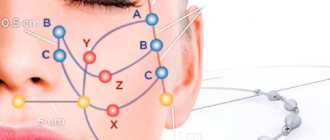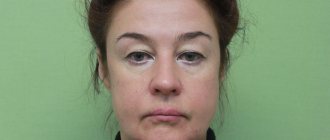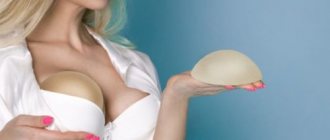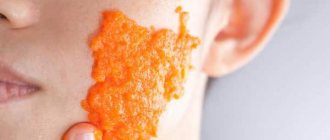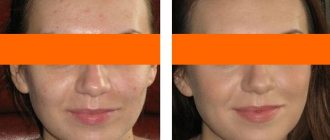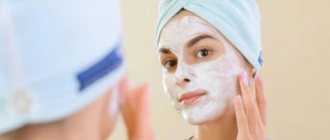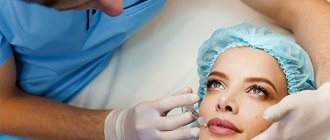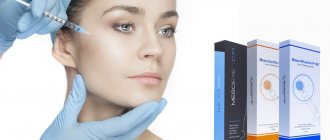pharmachologic effect
The pharmacological properties of the drug are determined by its active components. Chlorhexidine has antiseptic and antimicrobial effects. Used for topical use. Due to its properties, the drug is widely used in various fields of medicine: dentistry, surgery, gynecology, otorhinolaryngology, urology and others.
Pharmacodynamics
The drug belongs to the biguanide derivatives. When pathogenic microorganisms come into contact with Chlorhexidine, their cell membrane changes. As a result of dissociation of the salts of the active substance of the drug, the cytoplasmic membrane is destroyed, followed by the death of the bacterium. The drug is effective against gram-positive and gram-negative microorganisms. These include:
- Trichomonas vaginalis;
- Gardnerella vaginalis;
- Neisseria gonorrhoeae;
- Treponema pallidum;
- Bacteroides fragilis;
- Chlamydia spp.;
- Ureaplasma spp.;
- Proteus spp.;
- Pseudomonas spp.
The drug has a long-term antibacterial effect. Thanks to this, the medicine is used for antiseptic treatment of the surgical field.
Pharmacokinetics
The drug is used for topical use, so it does not penetrate the systemic circulation. Chlorhexidine can retain its antimicrobial activity for a long time on the surface where it was applied. This property allows the drug to be used for disinfecting medical instruments and personnel’s hands.
Chlorhexidine for the face. The use of "Chlorhexidine" in cosmetology
Due to its cleansing properties and availability, the drug “Chlorhexidine” is widely known both in cosmetology and in medicine.
This is a powerful antiseptic and is used to fight bacteria and viruses. Interesting fact! Use in cosmetology began when experts determined the beneficial effects on the skin of a combination of components such as clay and Chlorhexedine.
Dermatologists have conducted studies that have confirmed the success of peeling in the treatment of oily and problematic skin prone to inflammation.
Clay removes the stratum corneum and reduces excess fat secretions, and Chlorhexidine, penetrating into the skin, destroys bacteria that cause inflammation.
At the same time, the simplicity of preparing the composition and applying the peeling, with due care of safety, made it possible to use it even at home.
Important to remember! After home peeling using the components “Chlorhexidine” and clay, you need to take extra care of your face. The skin becomes more susceptible to environmental influences.
After the procedure, you must use a cream with SPF protection.
Cosmetologists advise using home peeling from the components “Chlorhexidine” and clay for clients who have problematic and oily skin.
Its bactericidal properties control the activity of the sebaceous glands, help reduce “black spots” on the face and inflammatory processes.
Be careful! Like any antiseptic, Chlorhexidine destroys both pathogenic microflora and beneficial bacteria that are present on our skin in the required volume.
Beneficial bacteria regulate the growth of pathogenic bacteria, destroying their excess. With frequent use, there is a risk of disturbing the microflora of the skin and deteriorating the appearance of the face.
The consequence of drug abuse can also be disruption of the sebaceous glands.
Despite the fact that Chlorhexidine is a drug, it does not penetrate into the bloodstream when applied to the skin. Its use is absolutely safe.
Read the popular article on the site: Comfortable long-term hair removal: Sugaring at home. How to prepare the paste and do sugar hair removal correctly.
Indications for use
Chlorhexidine is widely used in various fields of medicine. The main indications for its use include:
- colpitis;
- erosive lesions of the cervix;
- inflammatory gum disease;
- periodontitis;
- angina;
- pharyngitis;
- tonsillitis;
- runny nose, nasal congestion;
- laryngitis;
- stomatitis;
- disinfection treatment of removable dentures;
- burns of varying severity;
- prevention of sexually transmitted diseases: genital herpes, chlamydia, syphilis, gonorrhea, trichomoniasis;
- candidiasis in the genital area.
Chlorhexidine can be prescribed for both prophylactic and therapeutic purposes. The drug is used for antiseptic treatment of the surgical field, medical instruments, and doctor's hands. The drug is used to prevent infection of postoperative wounds.
The dosage, frequency of administration and duration of use of the drug are determined by the doctor based on the existing disease and the severity of the condition. Chlorhexidine solution is intended for local use only. Instructions for use of the drug include the following points:
- To prevent the transmission of sexually transmitted diseases, a 0.05% solution is used. It must be used no later than 2 hours after unprotected sexual intercourse. For men, administration of Chlorhexidine into the urinary canal is indicated, for women - into the urinary canal and into the vaginal area. To increase the effectiveness of the drug, it is not recommended to urinate for several hours after its use.
- Treatment of some gynecological diseases involves douching with a 0.05% solution of Chlorhexidine. Before the procedure, you must consult a gynecologist.
- For infectious and inflammatory diseases of the urinary system, a 0.05% solution of Chlorhexidine is prescribed as part of complex therapy. The drug is injected into the urinary canal 2 times a day. The average course of treatment is 7-10 days.
- For antiseptic treatment of burn and wound surfaces, various concentrations of Chlorhexidine are used. Applications with the drug help prevent infection.
- Chlorhexidine is used to treat the surgical site.
- Gargling with Chlorhexidine is prescribed in the presence of infectious and inflammatory diseases of the oropharynx. To increase the effectiveness of the drug after the procedure, it is not recommended to consume food and water for 1-1.5 hours.
- Complex therapy for inflammatory diseases of the nose includes rinsing with Chlorhexidine. The procedure is performed strictly as prescribed by the doctor.
Description and composition, where to buy, price
Chlorhexidine is an organic compound with antimicrobial properties that acts against bacteria, viruses and fungi. Externally, chlorhexidine looks like an odorless white or pale yellow powder and is poorly soluble in water and most organic solvents.
Due to the poor solubility of chlorhexidine in water, salts of chlorhexidine and glucuronic acid (gluconate, diluconate), hydrochloric acid (hydrochloride) or acetic acid (acetate) are mainly used. Chlorhexidine gluconate is highly soluble in water and alcohol.
Concentrated chlorhexidine gluconate is a colorless or pale yellow, odorless solution with a bitter taste. Aqueous solutions of chlorhexidine salts exhibit maximum biological activity and chemical stability at a solution pH of 5 to 8.
Chlorhexidine gluconate as an antiseptic is used in concentrations from 0.5 to 4%. It is registered in the European Union Commission database (Cosmetic Ingredient Database) and can be used as a cosmetic preservative in a concentration of no more than 0.3%.
Chlorhexidine hydrochloride is included in tablets for sore throats and is used to disinfect catheters and as a preservative in creams, ointments and gels. Chlorhexidine acetate is used to disinfect equipment, surfaces and textiles, and is used to make antacids.
The most commonly used is chlorhexidine gluconate.
This compound was first synthesized in 1954 by ICI Pharmaceuticals. Chlorhexidine has been shown to have high antimicrobial activity, low toxicity to body cells, and is well tolerated by the skin and mucous membranes. Therefore, chlorhexidine has become widely used as an antimicrobial agent for topical use.
Hand disinfectants when used on intact skin contain 4% chlorhexidine digluconate, and antiseptics for damaged skin contain 1%.
In obstetric procedures, drugs containing 1% chlorhexidine are used; in dentistry, 0.2% chlorhexidine is included in mouth rinses; oral gels containing 1% chlorhexidine are also used.
Preparations containing chlorhexidine:
| A drug | price, rub. |
| Chlorhexidine bigluconate 0.05%, 100 ml, Samaramedprom, Russia | 55 |
| Chlorhexidine bigluconate 0.05%, SFF, 100 ml Samara factory | 84 |
| Chlorhexidine 0.5% 1 l, Rosbio | 169 |
| Chlorhexidine 0.05% 100 ml, Biogen | 15 |
| Chlorhexidine 0.5% alcohol, spray | 22 |
| 911 skin antiseptic with chlorhexidine, 0.3% | 45 |
Contraindications
Restrictions for the use of Chlorhexidine include:
- individual intolerance to the components of the drug;
- dermatitis;
- simultaneous use of other antiseptics;
- treatment of the surgical field when performing surgery on the central nervous system and auditory canal;
- ophthalmological procedures.
Children's age, pregnancy and lactation are not an absolute contraindication for the use of the drug. However, in these cases, Chlorhexidine should be prescribed according to strict indications.
Chlorhexidine for hair. Chlorhexidine for dogs
3. The shelf life of the drug is 2 years from the date of release, subject to storage and transportation conditions. Do not use the drug after the expiration date.
4. Chlorhexidine 0.5% is stored and transported in sealed manufacturer’s packaging in a dry, dark place, at a temperature from 1°C to 25°C.
5. The drug should be stored out of the reach of children.
6. Vials with the drug without labels, with an expired expiration date, with a changed color and consistency of the drug, with a violation of the integrity and tightness of the closure are subject to rejection and disposal.
No special precautions are required for disposal. II
PHARMACOLOGICAL PROPERTIES
II. PHARMACOLOGICAL PROPERTIES
7. Chlorhexidine 0.5% is one of the most active local antiseptics and disinfectants. Chemically, it is a dichlorine-containing biguanide derivative.
Chlorhexidine bigluconate has a rapid and strong bactericidal effect on gram-positive and gram-negative bacteria. Does not affect viruses and spores. The drug is stable and after treating the skin (hands, surgical field, etc.) with it, it remains on it in a certain amount, which continues to give a bactericidal effect. The drug retains activity in the presence of blood and pus, although somewhat reduced. Chlorhexidine is also effective against treponemas, gonococci, and trichomonas.
Ethanol enhances the effectiveness of the drug.
III. ORDER OF APPLICATION
8. A solution of chlorhexidine 0.5% is used for disinfection and antiseptic treatment of hands, the surgical field (as well as for the treatment of wounds and burn surfaces, the treatment of infected abrasions, skin cracks, open mucous membranes).
9. Contraindication for use is individual hypersensitivity to the components of the drug.
10. Chlorhexidine solution 0.5% is used externally.
Before application, the skin surface is sanitized.
Shake the bottle thoroughly before use.
Chlorhexidine 0.5% solution is applied in a thin layer, holding the bottle at a distance of 20 cm from the surface to be treated, 2 times with an interval of 2 minutes.
11. The drug is contraindicated for dermatitis.
12. When treating injuries in the head area, the animal’s eyes should be protected from contact with the drug. In case of contact with the mucous membranes of the eyes, they should be quickly and thoroughly rinsed with water.
13. Simultaneous use with iodine is not recommended to avoid the development of dermatitis.
14. Do not mix chlorhexidine 0.5% with other disinfectants and detergents.
15. Incompatible with carbonates, chlorides, phosphates, borates, sulfates, citrates.
16. Compatible with drugs containing a cationic group (benzalkonium chloride, centrimonium bromide). Increases the sensitivity of bacteria to chloramphenicol, kanamycin, neomycin, cephalosporins.
IV. PERSONAL PREVENTION MEASURES
17. When using the drug, you should follow the general rules of personal hygiene and safety precautions provided for when working with medicines.
18. Vials of the drug must not be used for food purposes.
19. When working with 0.5% chlorhexidine solution, do not drink, smoke or eat.
20. Organization-, 600014, Vladimir, st. Lakina, 4b.
Interaction
When preparing the solution, it is necessary to take into account the hardness of the water. At pH above 8, Chlorhexidine precipitates. Hard water reduces the bactericidal properties of the drug.
Chlorhexidine cannot be combined with anionic compounds.
The combined use of Chlorhexidine and iodine increases the risk of dermatitis.
The drug increases the sensitivity of microorganisms to antibacterial drugs.
Chlorhexidine and Levomekol are often used to treat various skin lesions.
The presence of impurities of blood, pus and other organic substances slightly reduces the bactericidal activity of Chlorhexidine.
In case of open head injury, spinal cord injuries, or perforation of the eardrum, it is not recommended to use Chlorhexidine.
If the drug interacts with the mucous membrane of the eye, it is necessary to rinse the eyes with water.
Benefits and harms of the substance
Before using this remedy, you should first find out whether it is possible to wipe your face with chlorhexidine without fear, weighing the pros and cons. Chlorhexidine can not only destroy viruses and harmful bacteria, but also have a negative effect on beneficial microorganisms.
This remedy can get rid of acne, but its excessive use can cause a disruption in the natural balance of microflora.
Before treatment, you should consult your doctor about the required dosage and find out whether chlorhexidine can be used to wipe your face.
Before using chlorhexidine for skin treatment, you should consult a doctor
Due to the fact that chlorhexidine is a very affordable and easy-to-use drug, there are many positive reviews about this drug on the Internet.
There are practically no arguments against its use. The composition of chlorhexidine determines its effectiveness. By following all the necessary safety precautions for using chlorhexidine, you can achieve a high positive result.
Analogs
There are situations in which it becomes necessary to replace Chlorhexidine with another drug. Analogues of the drug include:
- Miramistin;
- Furacilin;
- Hydrogen peroxide;
- Hexicon;
- Dioxidine;
- Chlorophyllipt.
Which is better: Chlorhexidine or Miramistin?
Miramistin is a broad-spectrum antiseptic. The active substance of the drug is benzyldimethyl[3-(myristoylamino)propyl]ammonium chloride monohydrate. The drug has an antimicrobial effect against gram-positive and gram-negative bacteria. In addition, Miramistin has antifungal and antiviral effects. The drug accelerates tissue regeneration and prevents infection. Miramistin is used in many areas of medicine. The main indications for its use include:
- acute or chronic otitis;
- sinusitis;
- pharyngitis;
- stomatitis;
- gingivitis;
- periodontitis;
- prevention of wound infection in the postoperative period;
- reducing the risk of suppuration of a postpartum wound;
- vulvovaginitis;
- endometritis;
- burns of varying severity;
- mycosis;
- pyoderma;
- prevention of sexually transmitted diseases.
Miramistin and Chlorhexidine are antiseptic drugs. The drugs differ in their active ingredients. Chlorhexidine is actively used as part of complex therapy for pathologies of the genitourinary system. Miramistin is prescribed to relieve symptoms of diseases associated with inflammation of the nasopharyngeal mucosa. The use of Chlorhexidine is contraindicated during pregnancy, childhood, and if you are prone to allergic reactions. Miramistin has no such restrictions. Before purchasing any of these drugs at a pharmacy, it is recommended to consult a doctor.
Which is better: Chlorhexidine or Furacilin?
Furacilin is a drug belonging to the group of antimicrobial agents. Its active substance is nitrofural. Furacilin has an antiseptic effect against various gram-positive and gram-negative bacteria. Available in the form of tablets, soluble in water. Intended for outdoor use only. Main indications for prescribing Furacilin:
- chronic purulent otitis media;
- dysentery;
- bedsores;
- burns of any severity;
- stomatitis;
- infected wounds;
- angina;
- inflammatory diseases in the paranasal sinuses.
Furacilin and Chlorhexidine belong to the group of antiseptic drugs. The drugs are used for the purpose of antimicrobial action on the mucous membranes or skin in the presence of infectious and inflammatory diseases. Furacilin, unlike Chlorhexidine, has regenerating properties. Medicines differ in the form of release. Furacilin is produced in the form of tablets for preparing a solution. Chlorhexidine is available in solution form.
Which is better: Chlorhexidine or hydrogen peroxide?
Hydrogen peroxide is the most popular disinfectant. The active substance of the drug is a 3% solution of hydrogen peroxide. The medicine has hemostatic, antiseptic, deodorizing and disinfectant effects. When hydrogen peroxide comes into contact with damaged areas of the skin or mucous membranes, unfavorable conditions are created for the growth of pathogenic microorganisms. Due to the abundant foaming, additional cleansing of the wound from polluting particles occurs. Thanks to this effect, bleeding is stopped. Indications for the use of hydrogen peroxide are:
- infected wounds;
- bleeding from damaged areas of the skin;
- antiseptic treatment of surgical instruments;
- removal of sulfur plugs.
Hydrogen peroxide and Chlorhexidine are antiseptics. Both drugs are available in the form of an aqueous solution. Medicines have a disinfectant, antiseptic and deodorizing effect. Antiseptics are well tolerated and rarely cause side effects. The difference between hydrogen peroxide and Chlorhexidine lies in their mechanism of action. Hydrogen peroxide has an antioxidant effect. The drug destroys pathogenic microorganisms with subsequent formation of water. The action of Chlorhexidine is to penetrate the bacterial cell and destroy it.
Which is better: Chlorhexidine or Hexicon?
Hexicon is an antiseptic used in gynecology. The drug is available in the form of vaginal suppositories and tablets. The active substance of Hexicon is chlorhexidine bigluconate. The drug is effective against gram-positive and gram-negative microorganisms. The main indications for prescribing the drug include:
- preventive measures to reduce the risk of developing sexually transmitted diseases;
- antiseptic treatment of the genital tract before planned surgery, childbirth or instrumental examinations in the pelvic area;
- vaginosis;
- colpitis
Hexicon D was developed for use in children. It also contains chlorhexidine digluconate, but in a lower dosage.
Chlorhexidine and Hexicon are among the antiseptic drugs effective against gram-negative and gram-positive bacteria. The drugs have a similar composition and mechanism of action. The difference lies in the release form. Chlorhexidine is produced as a solution. Hexicon is available in the form of vaginal suppositories and tablets. Before using medications, it is recommended to consult a doctor. The specialist will be able to assess the severity of the condition, as well as prescribe the necessary dosage and course duration.
Which is better: Chlorhexidine or Dioxidine?
Dioxidin is a broad-spectrum antimicrobial agent. The active substance of the drug is hydroxymethylquinoxaline dioxide. Dioxidin has an antiseptic and disinfectant effect. Available in the form of an ointment for external use, a solution for infusion and external use. Dioxidin is effective against many gram-positive and gram-negative microorganisms. The main indications for its use include:
- intolerance and ineffectiveness of other antiseptics;
- sepsis;
- purulent meningitis;
- osteomyelitis;
- trophic ulcers;
- violation of the integrity of the skin of various localizations;
- phlegmon;
- pleural empyema;
- purulent mastitis.
The drug is not recommended for use during pregnancy and lactation, as well as in childhood. Depending on the disease and its severity, Dioxidin is administered intravenously or applied as compresses.
Dioxidine and Chlorhexidine belong to the group of antiseptic drugs. The drugs differ from each other in the active substance, mechanism of action and effect. Dioxidin is produced in the form of a solution for infusion and external use, as well as ointments. Chlorhexidine is available in solution form.
Which is better: Chlorhexidine or Chlorophyllipt?
Chlorophyllipt is an antimicrobial agent of plant origin. The active component of the drug is considered to be eucalyptus leaf extract. The drug is available in the form of an oil and alcohol solution, spray and lozenges. Chlorophyllipt has antibacterial and anti-inflammatory effects. Indications for its use are:
- burns of varying severity;
- trophic ulcers;
- sepsis;
- lung abscess;
- pleural empyema;
- cervical erosion.
The drug is actively used as part of complex therapy for many diseases caused by antibiotic-resistant pathogens. Chlorophyllipt is approved for use during pregnancy and lactation, but under strict indications.
Chlorophyllipt and Chlorhexidine are among the antiseptic drugs used as part of the complex therapy of infectious and inflammatory diseases. Chlorophyllipt has the ability to enhance the effect of Chlorhexidine. Due to their varied release form, both drugs are actively used in various fields of medicine. The differences between the drugs are as follows:
- Chlorophyllipt is a herbal preparation. Chlorhexidine is produced using the chemical industry;
- Chlorhexidine has a prolonged effect. This means that the drug retains its activity on the applied surface for a long time;
- Chlorophyllipt can be used for both external and internal use. Chlorhexidine is used only as a local antiseptic;
- Chlorophyllipt causes fewer allergic reactions than Chlorhexidine.
The final decision about which drug will be more effective is made by the doctor. The specialist will conduct the necessary diagnostics and determine the correct dosage of the drug.
How to properly store chlorhexidine
The healing properties of chlorhexidine last longer if the following storage conditions are met:
- It must be stored in a locked place, out of reach of children.
- The temperature where the medicine is stored should be no higher than 25 degrees.
- After use, the container with the medicine should be closed immediately.
- Do not heat chlorhexidine and bring it to a boil.
- Direct sunlight should not fall on the container with the medicine.
Important to remember! Uncontrolled use of chlorhexidine can cause side effects such as itching, flaking and tightness of the skin. New rashes may appear.
It is very important to strictly follow the rules for using the drug, control its dosage and use it according to the recommendations of the attending physician.
How to use chlorhexidine instead of facial toner? Watch video tips from a cosmetologist:
Opinions and reviews about the use of chlorhexidine for the face. Find out from the video:
How to rejuvenate your skin with cleansing? Watch this helpful video:
For children
In pediatric practice, it is allowed to use a 0.05% solution of Chlorhexidine. If the purchased drug has a high concentration, it should be diluted. Indications for the use of Chlorhexidine in childhood are:
- angina;
- laryngitis;
- tonsillitis;
- pharyngitis;
- stomatitis;
- gingivitis;
- periodontitis;
- violation of the integrity of the skin;
- burns of varying severity.
The drug is prescribed for gargling or irrigating the throat, rinsing the nose, or performing inhalations using a nebulizer. It is recommended to use Chlorhexidine according to strict indications and under the supervision of a physician. The appearance of the first signs of adverse reactions requires discontinuation of the drug. It is not uncommon for a child to swallow the medicine while gargling. In such situations, it is recommended to induce vomiting and take absorbents.
Use instead of tonic
It is not advisable to use chlorhexidine solution as a tonic. You should first think about whether it is harmful to wipe your face with chlorhexidine and whether this procedure can be done daily.
If you use it frequently, your skin will become dry.
Therefore, it is better to use a special tonic to cleanse your face, which has an anti-inflammatory and moisturizing effect.
The active substances in the toner have a tonic effect on the skin pores, causing them to close. The medicine does not have this effect. Therefore, chlorhexidine is recommended for single use.
During pregnancy and lactation
Chlorhexidine has a local effect on the body. In this regard, it does not enter the systemic circulation. These properties allow the drug to be used during pregnancy and lactation. However, a woman should not use the drug uncontrollably. Chlorhexidine during pregnancy is prescribed if the following indications exist:
- candidiasis;
- stomatitis;
- prevention of infection of wounds, abrasions and cracks in the skin;
- vaginitis;
- salpingitis;
- angina;
- pharyngitis;
- laryngitis;
- tonsillitis.
If the first signs of poor tolerability of the drug appear, its use should be discontinued. Before purchasing Chlorhexidine at a pharmacy, it is recommended to consult a doctor. During pregnancy and lactation, it is necessary to carefully select medications. Only a specialist will be able to assess the severity of a woman’s condition and prescribe the correct therapy. Self-medication can lead to serious complications.
The difference between chlorhexidine and other antiseptics
Also different is that the substance does not cause a burning sensation, if the drug comes into contact with an open wound, it does not leave marks on the skin, healing does not slow down and scars do not form.
Antiseptic, bactericidal solution "Chlorhexidine"
In addition, in most cases it does not cause an allergic reaction or irritation . For these reasons, chlorhexidine is rightly considered an essential medicine that should be in every first aid kit. And many, knowing about its antiseptic properties, wonder whether it is possible to wipe the face with chlorhexidine to clean the epidermis.
Find out about: Facial skin rejuvenation with retinol cream from the pharmacy
